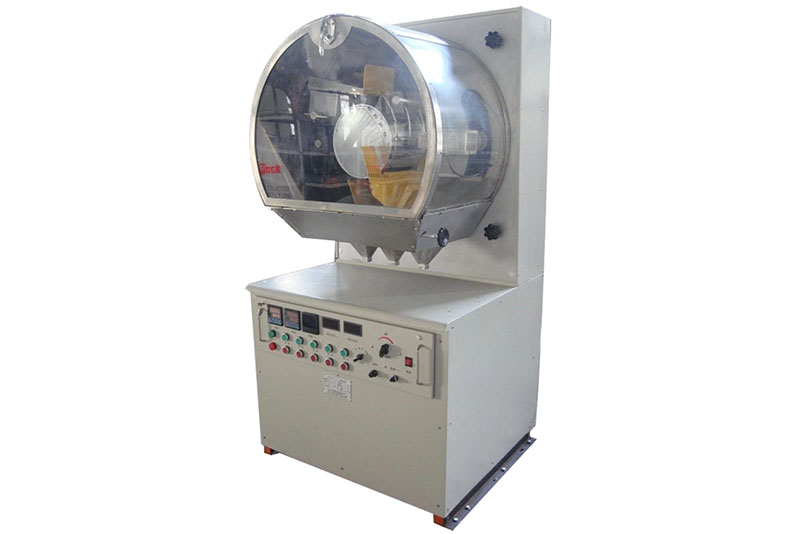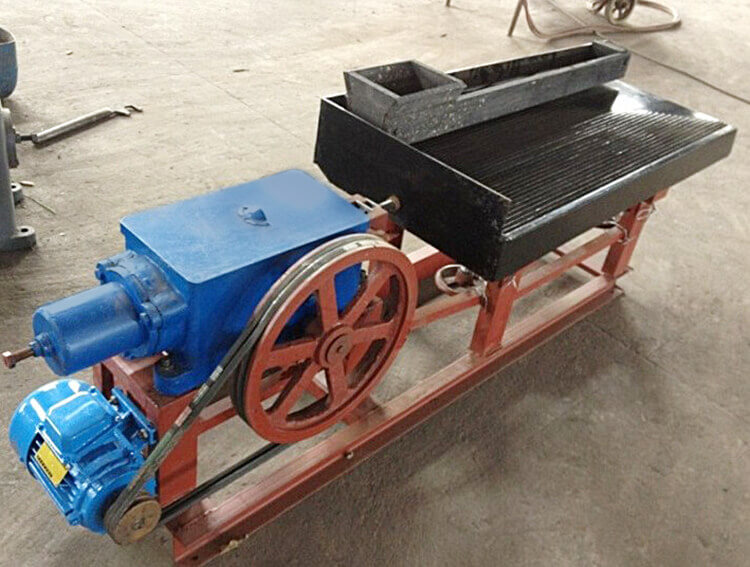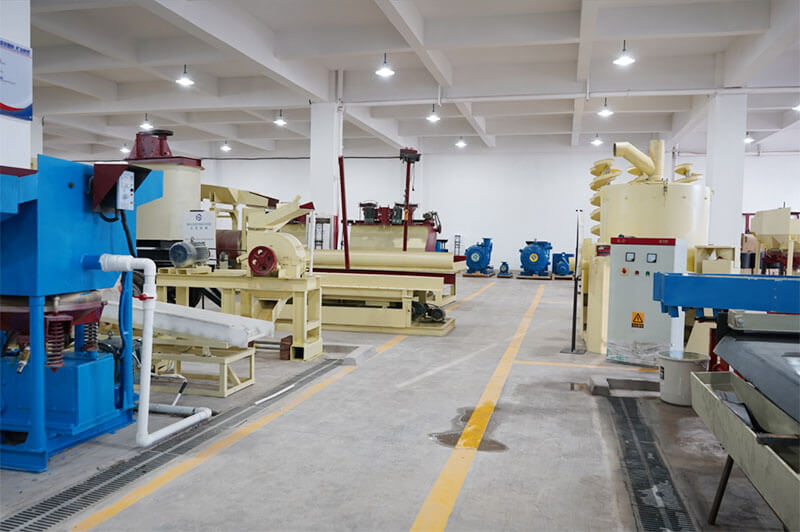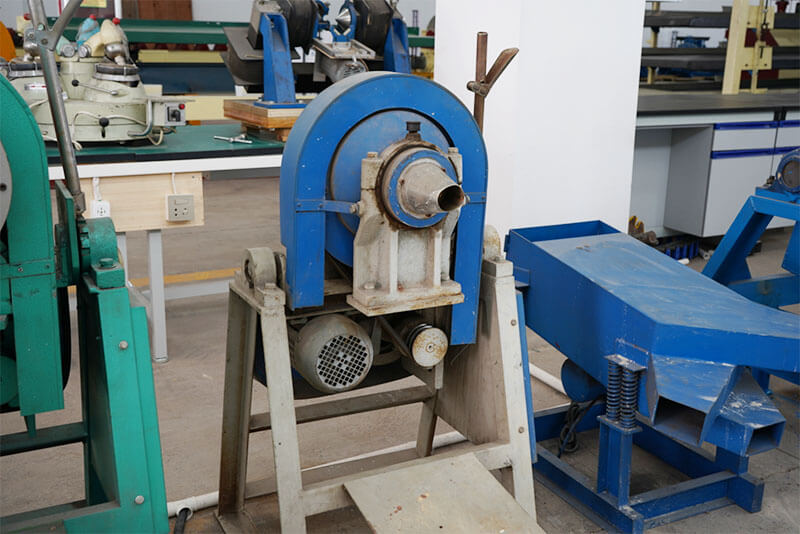Manganese is a critical mineral used extensively in various industries, particularly in steel production, batteries, and chemical applications. As a manufacturer of lab mining equipment in Ganzhou, Jiangxi province, it is essential to understand manganese’s characteristics, how to beneficiate it effectively, and the necessary laboratory equipment for testing. This blog will explore these aspects in detail.
What is Manganese?
Manganese (Mn) is a chemical element with atomic number 25. It is a hard, brittle metal that is not found in nature as a free element but rather in various minerals. Manganese is primarily obtained from its ores, the most notable being pyrolusite (MnO2), rhodochrosite (MnCO3), and other manganese-bearing minerals.
Key Characteristics of Manganese
Physical Properties:
Manganese is a silvery-gray metal that is hard and brittle in nature.
It has a melting point of about 1,246 °C (2,275 °F) and a boiling point of 2,062 °C (3,744 °F).
Chemical Properties:
Manganese readily oxidizes in air and forms various oxides and compounds.
It has multiple oxidation states, with +2, +4, and +7 being the most common.
Importance of Manganese
Steel Production: Manganese is a key alloying agent in steel manufacturing, enhancing hardness, strength, and resistance It improves the steel’s toughness and helps to prevent brittleness.
Batteries: Manganese is used in the production of alkaline and lithium-ion batteries, improving energy density and performance. It is also crucial for the cathode materials in rechargeable batteries.
How to Beneficiate Manganese?
The manganese beneficiation involves several steps aimed at increasing the manganese content and removing impurities. The key steps in manganese beneficiation are as follows:
Crushing and Grinding
Objective: The primary goal is to reduce the size of manganese ore to facilitate further processing.
Process: Use jaw crushers and hammer crushers to break down the ore into smaller pieces. These crushers are designed to handle hard materials.
After crushing, the ore is ground in ball mills or rod mills to achieve a finer particle size, allowing for effective mineral liberation. This step is crucial, as the liberation of manganese minerals from gangue is necessary for subsequent separation processes.
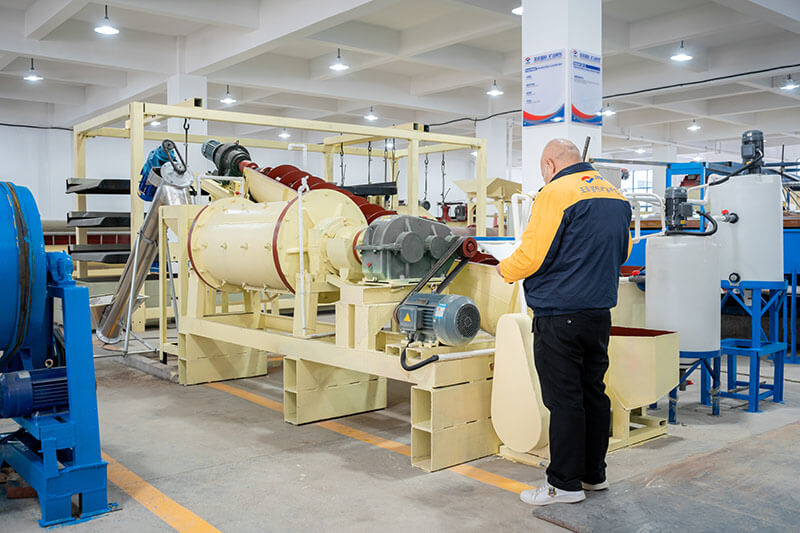
Screening
Objective: To separate the crushed ore into different size fractions.
Process: Utilize vibrating screens to classify the crushed ore based on size. This step helps to remove oversized particles that may not be suitable for further processing.
Gravity Separation
Objective: To concentrate on manganese by exploiting the differences in density between manganese minerals and gangue.
Process: Use jig separators, shaking tables, or spiral concentrators to separate the denser manganese particles from lighter waste materials. Gravity separation is a cost-effective method.
The denser manganese minerals settle at the bottom, while lighter impurities are washed away. The effectiveness of gravity separation depends on the particle size and density differences.
Flotation
Objective: To further enhance the concentration of manganese by separating it from other minerals.
Process: Introduce reagents to the slurry to make manganese minerals hydrophobic (water-repellent). This modification allows manganese particles to attach to air bubbles during flotation.
Use flotation cells to produce a froth that can be skimmed off, which contains the concentrated manganese. The flotation process is useful for fine particles that are difficult to separate through gravity methods.
Magnetic Separation
Objective: To remove magnetic impurities from the manganese concentrate.
Process: If the ore contains magnetic minerals, use magnetic separators to isolate them from the non-magnetic manganese. This step is crucial for improving the purity of the final product.
Magnetic separation is effective for removing iron and other magnetic contaminants, which can negatively impact the properties of manganese.
Calcination
Objective: To remove volatile impurities and enhance the manganese content.
Process: Heat the manganese ore in a calcination furnace to high temperatures, which helps in driving off impurities such as sulfur and phosphorus. This process can also enhance the structural integrity of manganese minerals.
Calcination can convert manganese minerals into more desirable forms for further processing, making them easier to refine and purify.
Refining
Objective: To produce high-purity manganese suitable for industrial applications.
Process: The final concentrate is subjected to smelting or other refining processes to obtain pure manganese metal or high-grade manganese alloys. This can involve additional chemical treatments or melting processes to achieve the desired purity.
The refining process enhances the quality of manganese, making it suitable for specific applications, particularly in the steel and battery industries.
Manganese Beneficiation Testing Lab Equipment
Testing is crucial for determining the effectiveness of manganese beneficiation processes and ensuring that the final product meets industry standards. The following lab equipment is essential for manganese testing:
Crushing and Grinding Equipment
Jaw Crushers and Hammer Crushers
Used for primary crushing of manganese ore to reduce its size for further processing. These machines are designed to handle hard, abrasive materials.
Ball Mills and Rod Mills
Employed for grinding crushed ore to a fine powder, allowing for better mineral liberation. The grinding process is vital for achieving the optimal particle size for separation.
Screening Equipment
Vibrating Screens
Essential for classifying crushed and ground ore into different size fractions for further processing. This equipment ensures the appropriately sized particles proceed to the next stage.
Separation Equipment
Jigs and Shaking Tables
Used for gravity separation to concentrate manganese based on density differences. These devices are effective for separating valuable minerals from waste.
Flotation Cells
Essential for flotation processes, allowing for the separation of manganese from other minerals using air bubbles and reagents. Flotation cells facilitate the collection of concentrated manganese froth.
Magnetic Separators
Employed to remove magnetic impurities from the manganese concentrate. Magnetic separation is crucial for enhancing the purity of the final product.
Calcination Equipment
Calcination Furnaces
Used for heating the manganese ore to remove volatile impurities and enhance manganese content. These furnaces operate at high temperatures to facilitate the calcination process.
Chemical Analysis Equipment
X-Ray Fluorescence (XRF) Spectrometer
Used for determining the chemical composition of manganese ores and concentrates. This non-destructive method provides rapid and accurate analysis of manganese content and impurities.
Atomic Absorption Spectroscopy (AAS)
Utilized for precise measurement of manganese concentration in samples. AAS is essential for determining the quality of manganese and ensuring it meets industry standards.
Sample Preparation Equipment
Sample Splitters
Used for obtaining representative samples from bulk materials for testing. Proper sampling is critical to ensuring accurate analysis results.
Laboratory Scales
It is essential to weigh samples before analysis. Precise measurements are vital for obtaining reliable test results.
Environmental Considerations in Manganese Mining
Environmental considerations are crucial in mining and beneficiation. Sustainable practices are essential to the ecological footprint of manganese extraction. Key considerations include:
- Waste Management: Disposal and management of tailings and waste materials generated during the beneficiation process are essential to prevent soil and water contamination.
- Water Usage: Mining processes often require significant water resources. Implementing water recycling systems can reduce overall consumption and mitigate impacts on local water supplies.
- Biodiversity Conservation: Mining operations should not disrupt local ecosystems. Take measures to protect biodiversity and rehabilitate mined areas after operations cease.
- Community Engagement: Engaging with local communities and stakeholders is vital for addressing concerns about mining activities and promoting transparency.
Conclusion
Tantalite mining beneficiation is a complex process that requires a combination of methods and careful laboratory testing. By understanding the various beneficiation methods and the equipment needed, mining operations can optimize their processes to enhance tantalum recovery and meet market demands. Furthermore, incorporating sustainable practices will help ensure the long-term viability of tantalum mining and its contribution to modern technology. Our expertise in manufacturing mining equipment and providing comprehensive testing services can help you achieve your mining goals while ensuring operational efficiency and environmental responsibility.
JXSC lab mineral processing equipment manufacturer has more than 38 years of experience in mining processing. We provide various lab mining equipment including gravity-separating equipment for processing minerals such as gold, tin, tungsten, lead, zinc, tantalum, niobium, iron, manganese, silver, titanium-iron, etc. Lab machines include laboratory jaw crusher, hammer crusher, roller crusher, grinding equipment, lab gravity separator, screening, washing equipment, etc. Welcome to consult!

